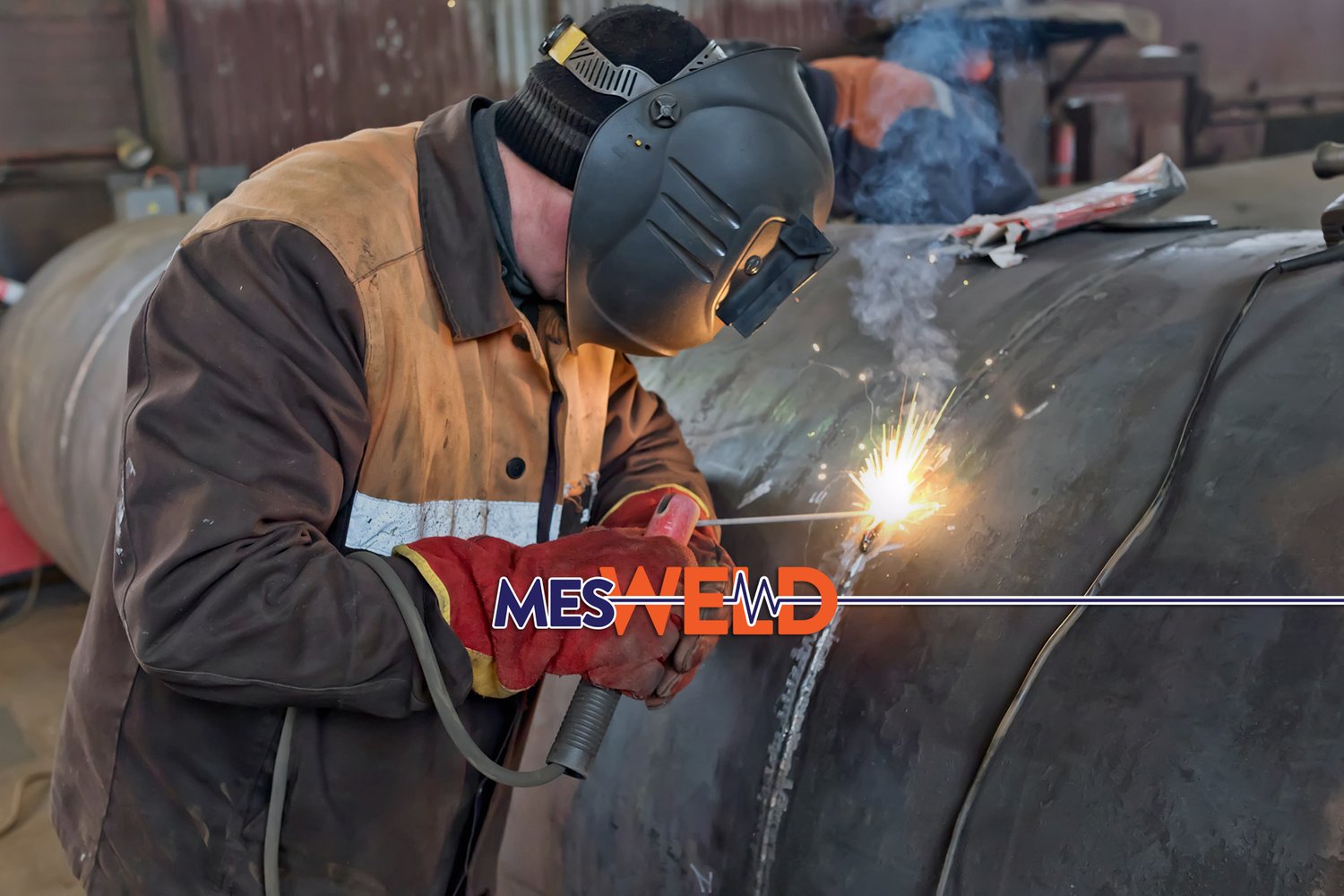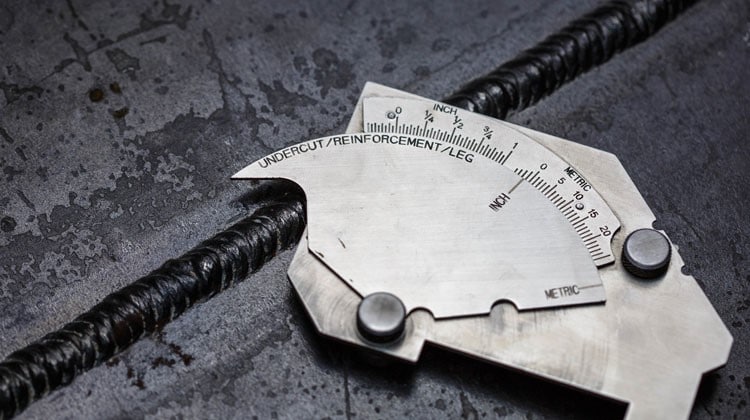Discover Advanced Welding Inspection Milwaukee Techniques for Precision
Discover Advanced Welding Inspection Milwaukee Techniques for Precision
Blog Article
An Extensive List for Effective Welding Evaluation Practices
In the realm of welding, the integrity of structures is paramount, necessitating a strenuous method to examination practices. A thorough checklist acts as an important tool in making sure adherence to market standards, including essential pre-welding, in-process, and post-welding evaluations. By systematically attending to product verification, weld high quality, and comprehensive paperwork, companies can significantly enhance safety and efficiency. Nonetheless, what certain aspects should be focused on in each phase to achieve optimum outcomes? Discovering these essential parts can generate understandings that profoundly influence welding procedures.
Comprehending Welding Requirements
Welding requirements play an essential duty in ensuring the high quality and safety of bonded components and frameworks. These requirements establish the standards for products, procedures, screening, and assessment, consequently offering a structure for regular quality control in welding processes. Different organizations, including the American Welding Society (AWS), the International Organization for Standardization (ISO), and the American Culture of Mechanical Engineers (ASME), have actually developed detailed criteria that control various aspects of welding.
Understanding welding requirements is important for professionals in the field, as adherence to these guidelines decreases the threat of defects and failures in bonded joints. These criteria cover specific demands for weld quality, consisting of appropriate resistances, the kind of welding techniques to be made use of, and the certifications required for examiners and welders.

Pre-Welding Evaluation Steps
Prior to any type of welding procedure commences, a thorough pre-welding evaluation is important to identify possible concerns that might compromise the top quality of the weld. This first action works as a critical foundation for ensuring conformity with relevant welding codes and criteria.
The initial step in the pre-welding inspection is to verify the materials being used. This includes checking for the appropriate type and quality of steels as defined in the job documentation. Next, it is vital to check the fit-up of the elements to make certain proper alignment and joint setup. Misalignment can lead to insufficient infiltration and structural weaknesses.
Furthermore, examining the cleanliness of the surfaces is vital; impurities such as corrosion, paint, or oil can adversely affect the quality of the weld. Following this, a complete analysis of the welding tools ought to be performed, making certain that it is adjusted and in excellent functioning problem.
Finally, examining the certifications of the welding employees is important. Welders need to possess the required accreditations and experience to carry out the particular welds needed for the task. By sticking to these pre-welding examination actions, the probability of flaws and failures in the final weld can be dramatically reduced.

In-Process Assessment Techniques
In-process examination techniques play a vital duty in guaranteeing the honesty and quality of welds as they are being carried out. These techniques enable assessors to identify flaws or discrepancies from requirements in real time, thus guaranteeing and stopping pricey repair services adherence to style demands.
One trick technique includes aesthetic evaluation, where assessors assess the weld bead for uniformity, infiltration, and correct account. This can be complemented by the usage of determines to measure weld dimensions, guaranteeing conformity with fixed resistances. In addition, the implementation of non-destructive testing (NDT) approaches, such as ultrasonic testing or magnetic bit screening, throughout the welding procedure can disclose subsurface imperfections that may not be visible externally.
Another essential element is keeping an eye on welding criteria, consisting of voltage, amperage, and travel speed. Consistency in these parameters is crucial for accomplishing you can try this out ideal weld quality. Documenting these criteria during the welding procedure gives a deducible record for future reference.
Training workers in proper evaluation methods and making use of proper tools enhances the effectiveness of in-process inspections. By integrating these techniques, companies can accomplish better welds, reduce rework, and inevitably make sure the security and dependability of welded structures.
Post-Welding Top Quality Checks
Adhering to the completion of welding operations, post-welding top quality checks are essential to verify that the welds satisfy all specified demands and standards. These checks are essential for making certain the stability and longevity of the bonded joints. The evaluation procedure image source normally begins with an aesthetic evaluation, analyzing for surface area defects such as splits, porosity, or incomplete fusion.
Consequently, non-destructive testing (NDT) techniques, such as ultrasonic testing, radiographic screening, or magnetic particle testing, might be utilized to spot inner defects that are not noticeable to the naked eye. Each technique has its unique advantages and is chosen based upon the weld's location, product kind, and the nature of the application.
Examining the mechanical properties of the weld, including tensile toughness and ductility, can give more guarantee of performance under operational problems. In general, complete post-welding examinations are crucial for preserving performance, adherence, and safety and security to regulatory and sector criteria.
Paperwork and Reporting
Just how can effective documents and reporting improve the welding evaluation procedure? Precise documents and detailed reporting are crucial components that make sure the stability and top quality of welding operations. Welding Inspection Milwaukee. They act as a formal document of evaluation searchings for, assisting in responsibility and traceability in conformity with industry criteria

A well-structured coverage system makes it possible for inspectors to clearly connect any type of areas, non-conformances, or inconsistencies calling for improvement. This transparency promotes an environment of constant renovation, as stakeholders can conveniently examine previous performance and execute restorative activities.
In addition, reliable documentation includes detailed documents such as welding procedure requirements (WPS), welder qualifications, and evaluation checklists. These aspects supply a structure for basics assessing weld top quality and adherence to developed standards. In the occasion of disagreements or top quality concerns, detailed documents works as a dependable recommendation, decreasing uncertainty and safeguarding all parties involved.
Lastly, maintaining arranged documents helps in training and certifying personnel, making certain that industry ideal techniques are promoted. Inevitably, meticulous documents and reporting not only improve the welding evaluation process yet additionally add to the general safety and reliability of bonded structures.

Verdict
Finally, a comprehensive list for efficient welding examination practices is crucial for making certain high quality and safety and security in welded frameworks. Adherence to developed welding standards, careful pre-welding examinations, rigorous in-process assessments, and detailed post-welding quality checks collectively add to the stability of bonded joints. In addition, diligent paperwork and coverage of examination searchings for enhance accountability and help with constant renovation. Implementing these practices will substantially help in conformity with sector criteria and inevitably cultivate a society of top quality in welding operations.
Welding requirements play a crucial role in ensuring the top quality and safety and security of bonded structures and elements. Various companies, consisting of the American Welding Society (AWS), the International Organization for Standardization (ISO), and the American Culture of Mechanical Engineers (ASME), have developed detailed standards that govern various elements of welding.
Following the conclusion of welding operations, post-welding quality checks are important to verify that the welds satisfy all defined requirements and requirements - Welding Inspection Milwaukee.In conclusion, a thorough checklist for effective welding inspection methods is important for making certain high quality and safety in bonded structures. Adherence to established welding criteria, precise pre-welding inspections, strenuous in-process assessments, and thorough post-welding top quality checks collectively contribute to the honesty of welded joints
Report this page